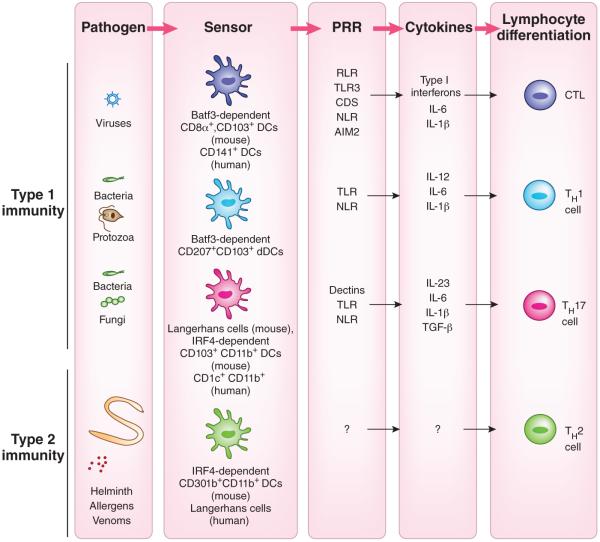Figure 2.
The instruction of various classes of T cell responses by DCs. The development and function of DCs in vivo requires transcription factors that are critical for each stage of their differentiation program. Studies probing the requirement or sufficiency for DC subsets have suggested a relationship between the DC lineage and T cell programming. CTL responses are induced by lymphoid organ–resident, Batf3-dependent CD8α+ DCs and tissue CD103+ DCs (mouse) and the human CD141+ DC counterpart. TH1 cell–mediated immunity requires stimulation, in a GM-CSF-dependent manner, by the CD207+CD103+ DC subset, a minor population of dermal DCs (mouse). TH17 responses are induced by mucosal IRF4-dependent CD103+CD11b+ DCs as well as by skin Langerhans cells, depending on the location of the pathogen (mouse). The human CD1c+ DCs prime TH17 cell responses. Finally, TH2 cell–mediated immunity requires IRF4-dependent CD301b+CD11b+ DCs (mouse). These DCs comprise the majority of dermal DC (dDC) population and are distinct from CD207+ CD103+ dermal DCs. In contrast, human Langerhans cells induce TH2 cytokine secretion ex vivo.

